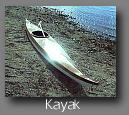


Language
English
Español
Pages:
Introduction
Plans (usage)
Plans (tables)
Wood
Stitching
Epoxy
Parts
Closing
Fibreglass
Opening
Extras
Water!
| Introduction |
Being an electronics engineer, I enjoy a profession which does not provide for much physical workout, except maybe an occasional climb up an antenna tower... And, a long time ago, I practiced some windsurf, but climatic changes have made windy days scarse.
![]() Combining windy days, with professional activities and with the wife's
occupations has become nearly impossible. So the search for a new
passtime started, and the idea of paddling appeared on the horizon.
Combining windy days, with professional activities and with the wife's
occupations has become nearly impossible. So the search for a new
passtime started, and the idea of paddling appeared on the horizon.
There are not many options on the local market (Córdoba, Argentina), Through the internet I learned a lot about the subject, and I even found a few construction plans. It seemed farfetched, trying to build a kayak, starting with nothing else but a table of numbers. I'm sure I wouldn't have reached the end without the help of a few friends on the 'net.
During construction, I took quite a few snapshot with my video camera, capturing details I thought might be interesting for others.
IMPORTANT! This is surely not a project for beginners! It's necessary to improvise in many situations. Maybe most importantly, as the designer mentions on his page, this design is very complicated to assemble. I freely admit there were several times I thought I wouldn't make it.
The info on these pages is free, and provides no garantee at all! I do not have that much time to spare to attend to basic construction details.
| Pages |

| (c) John Coppens ON6JC/LW3HAZ |